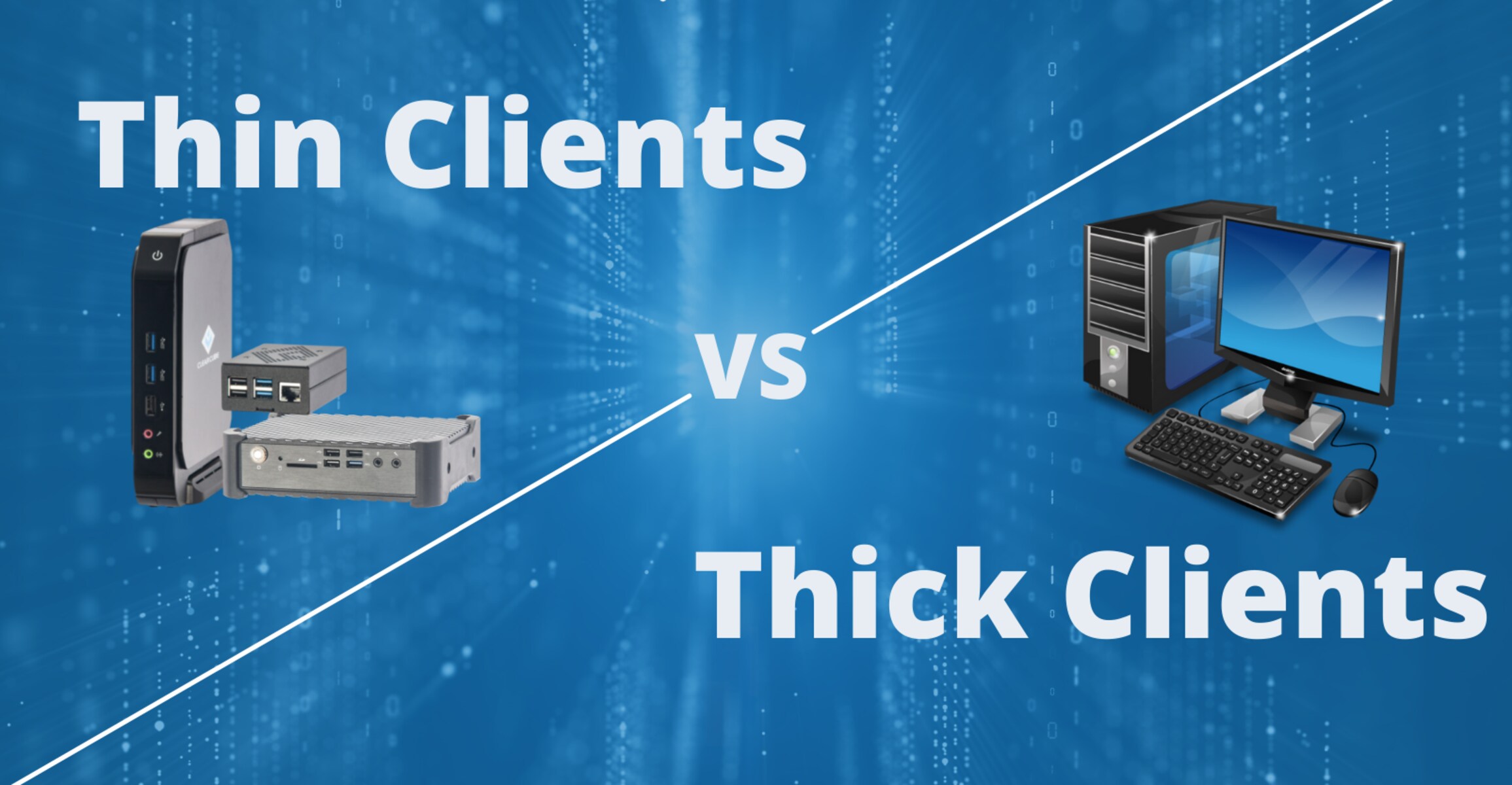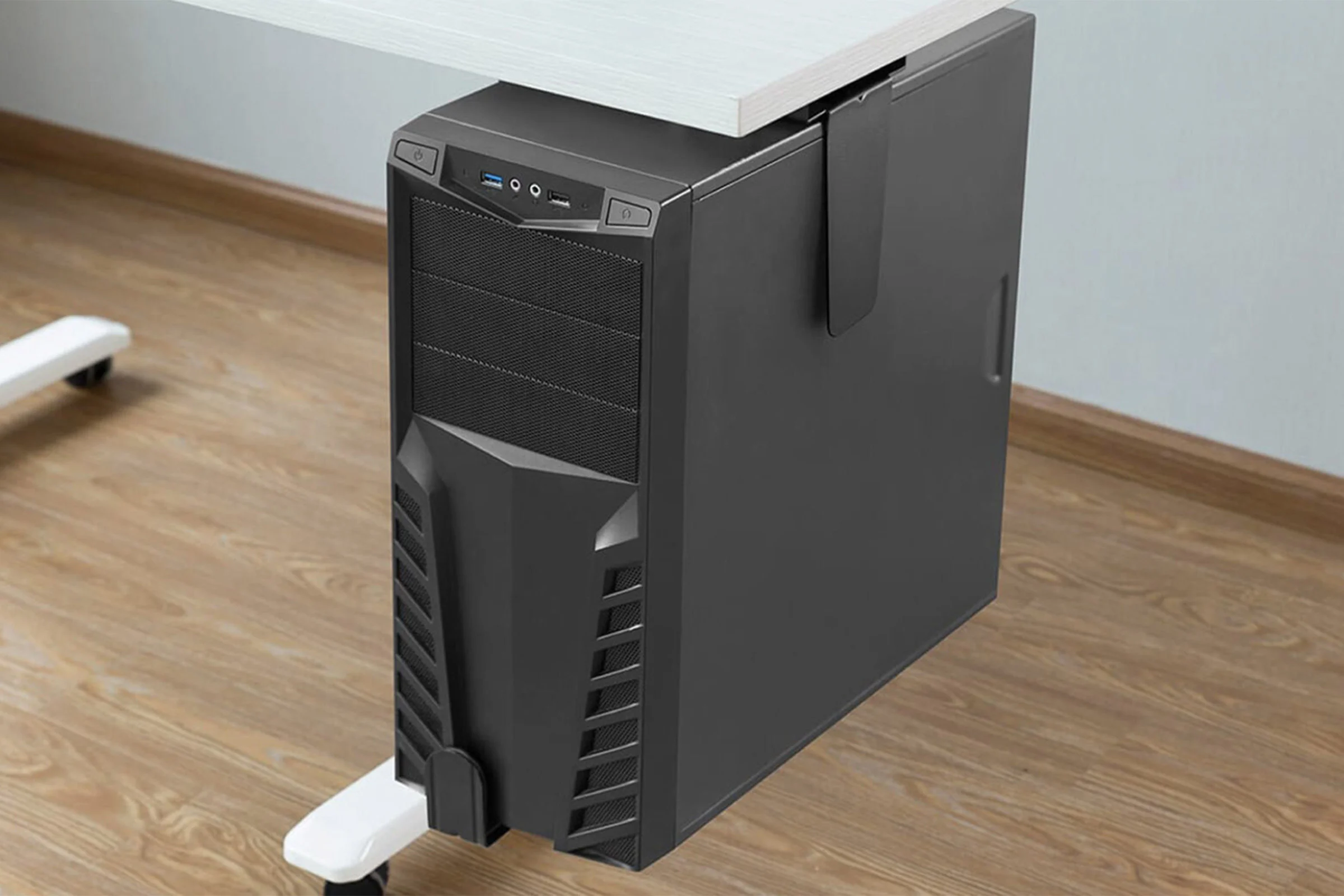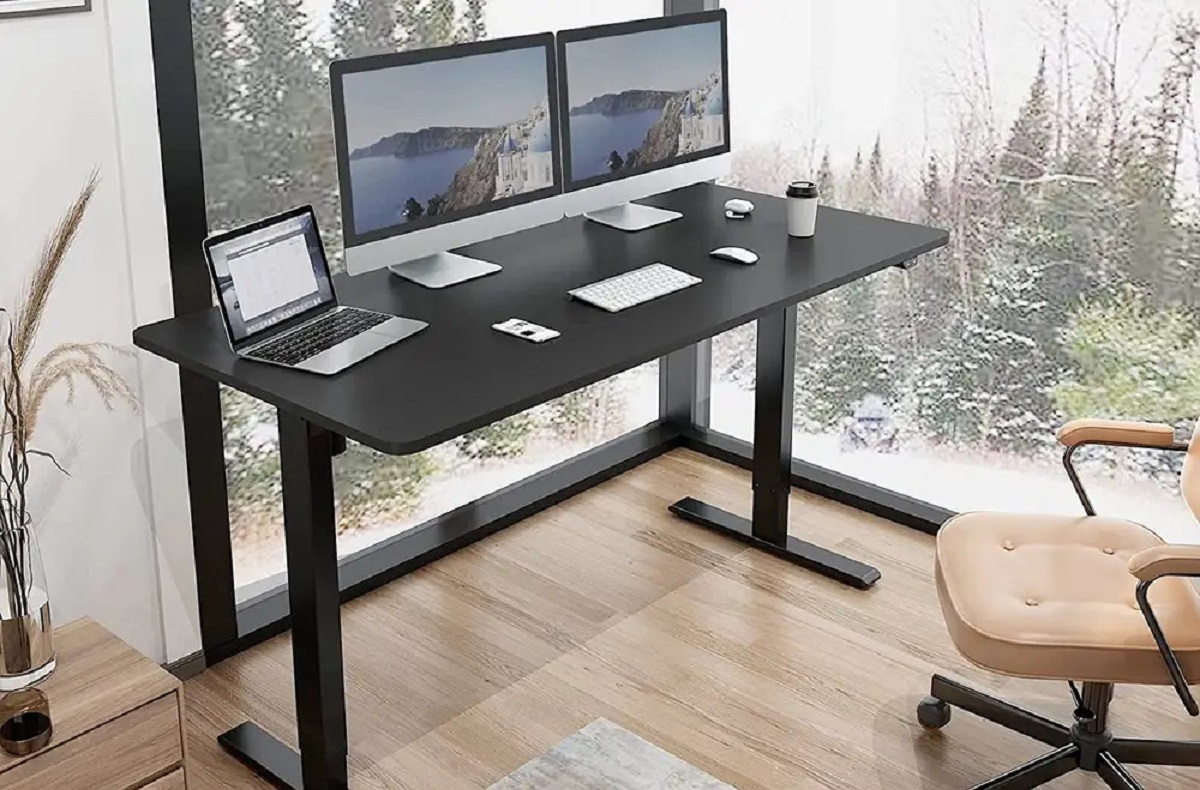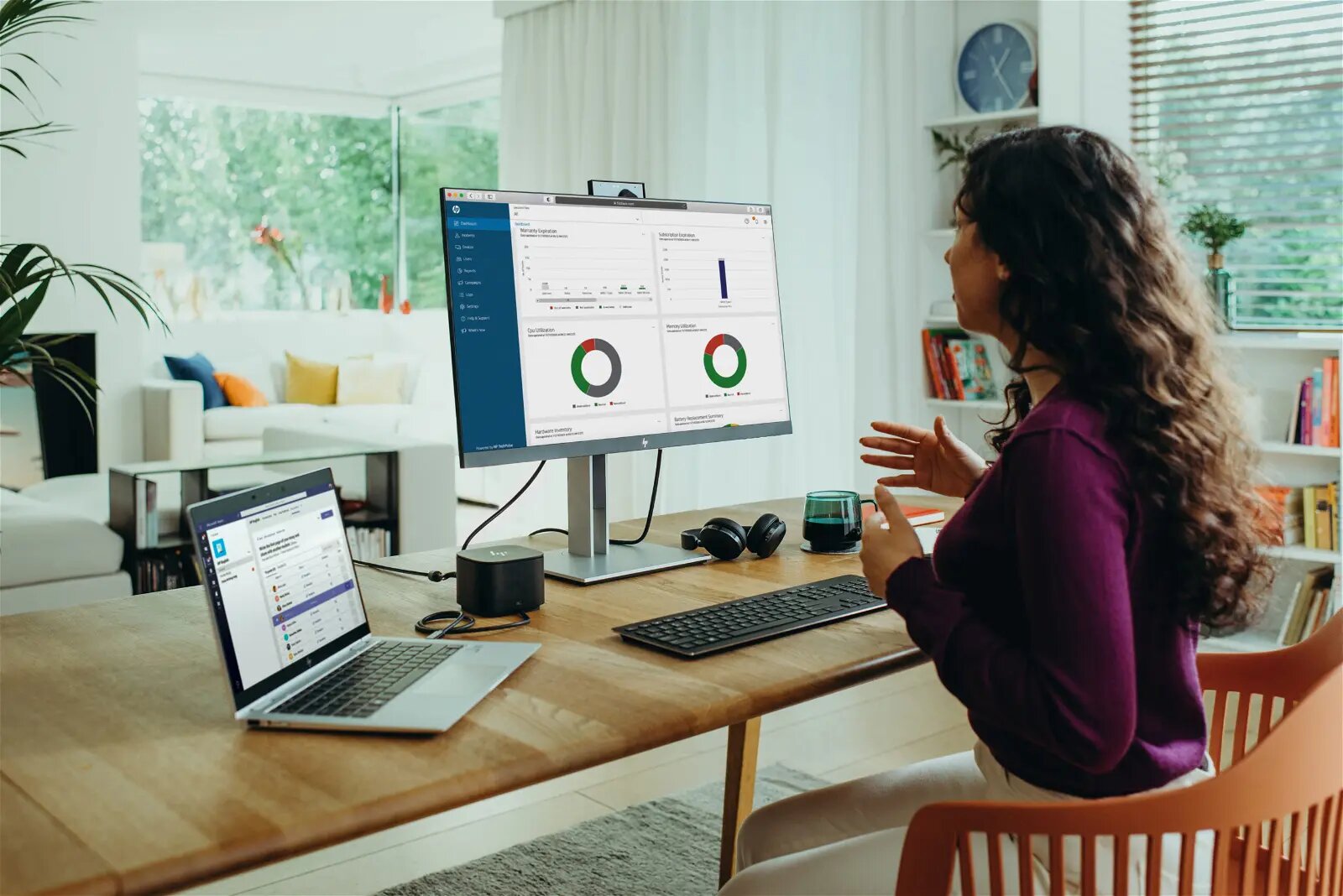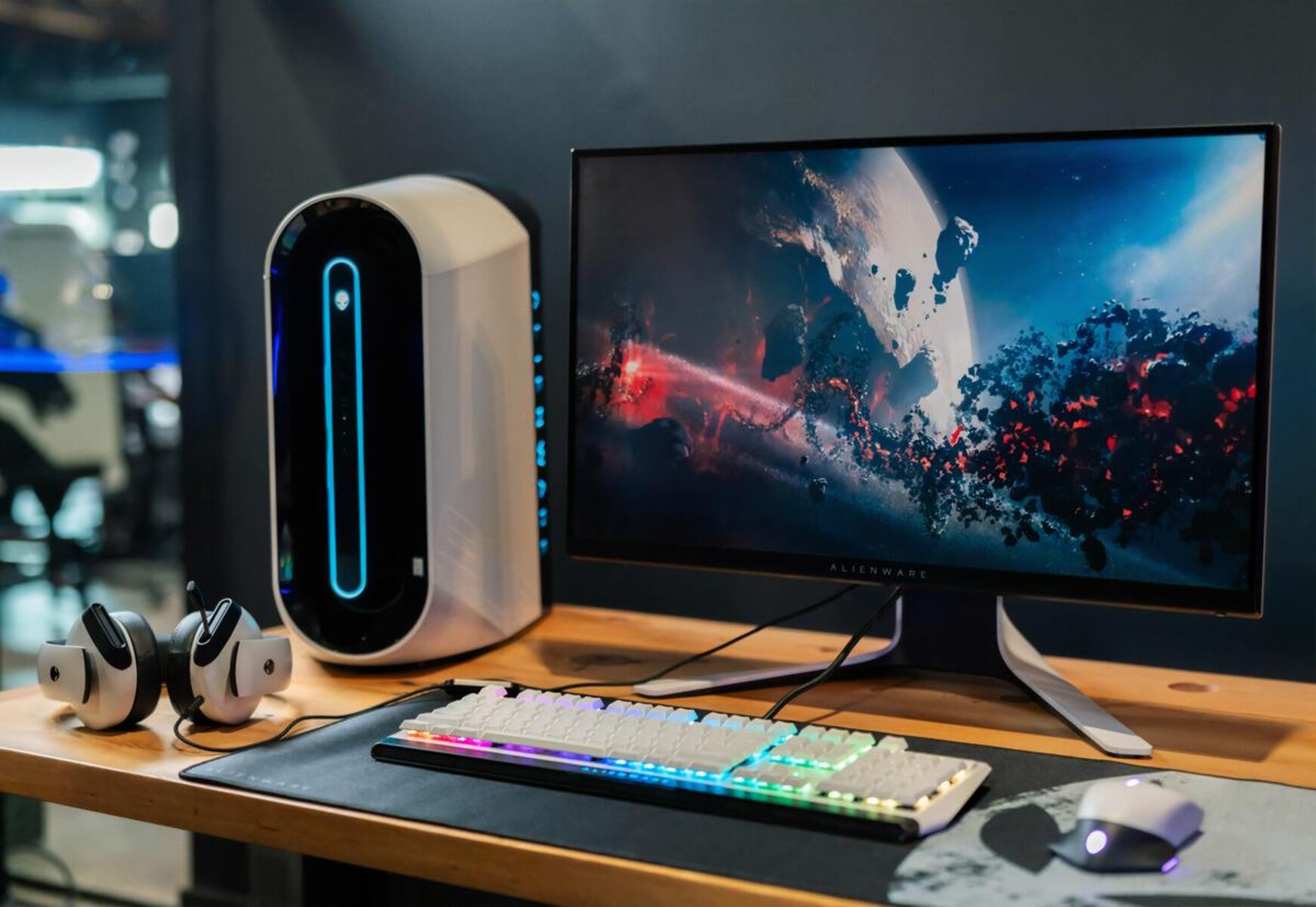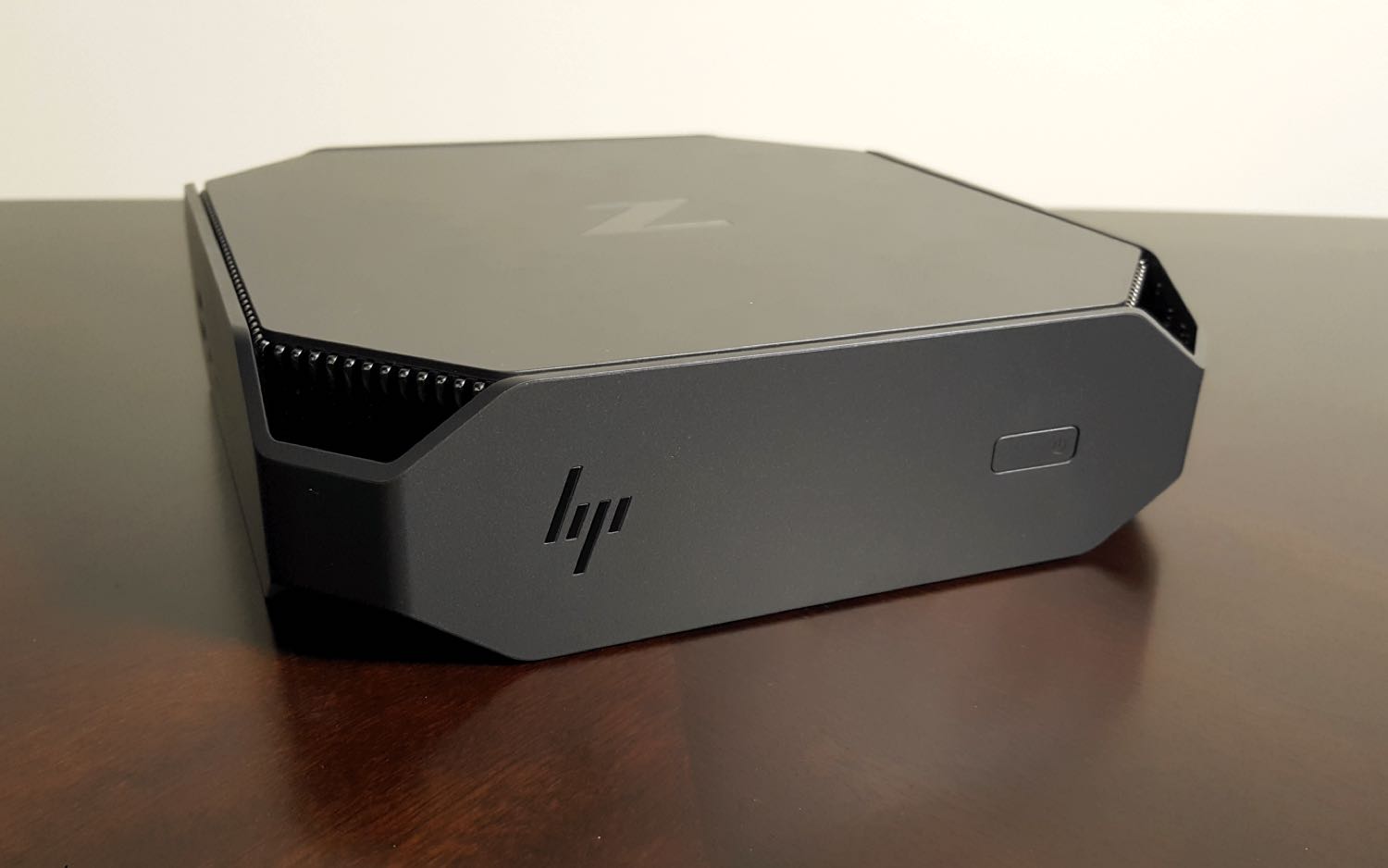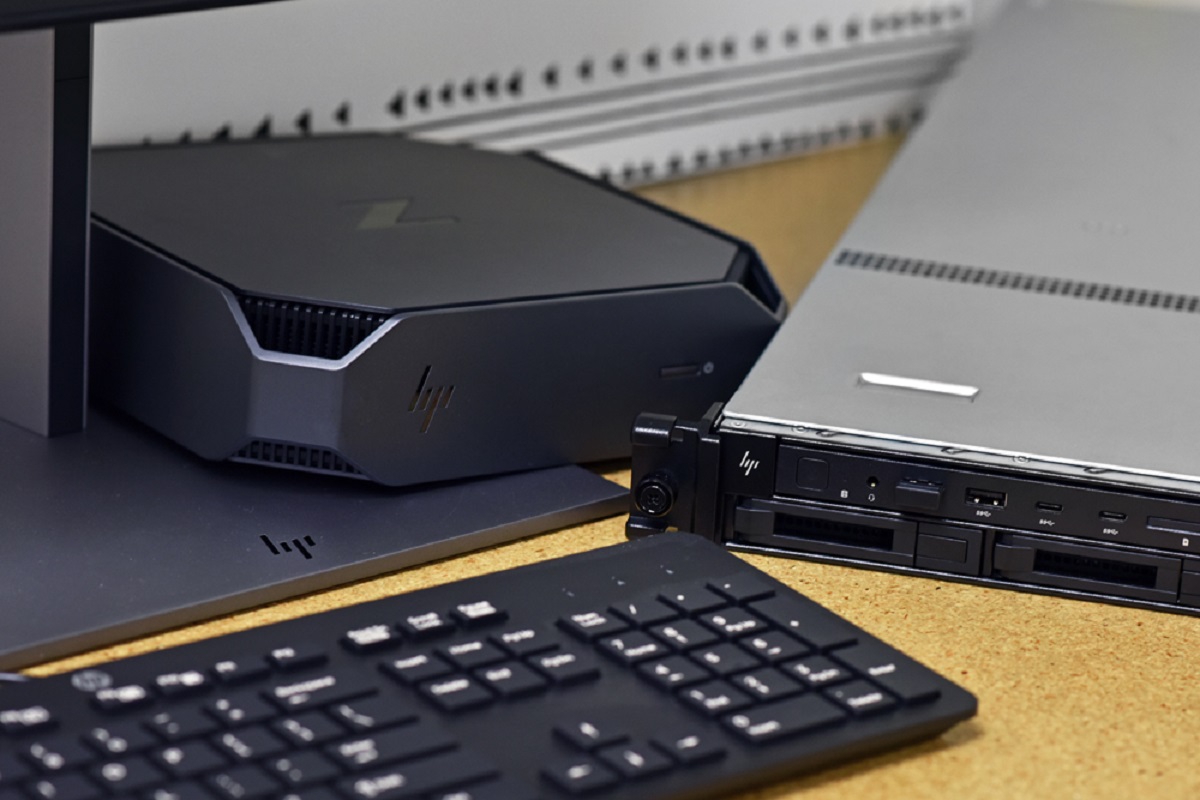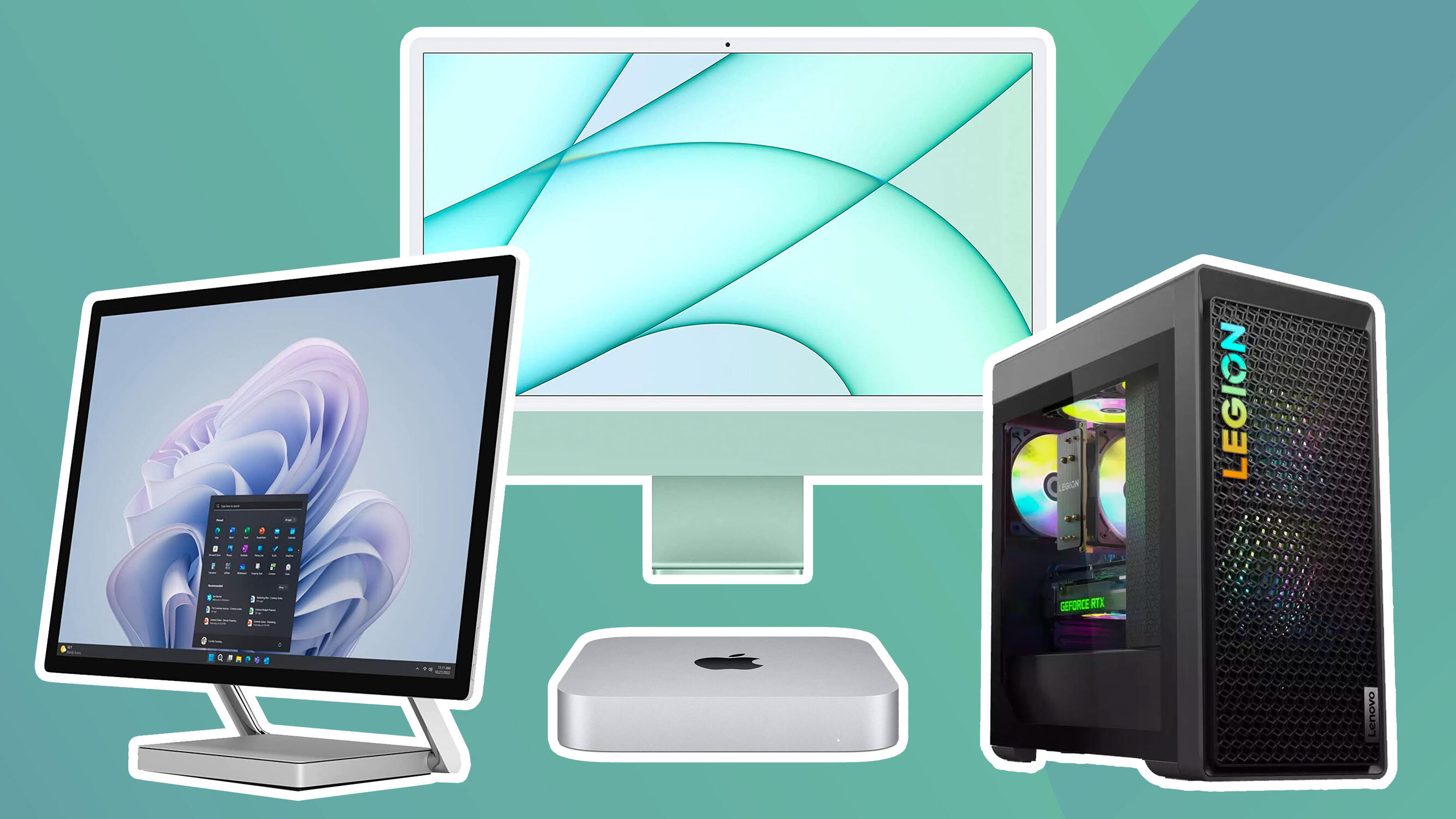Introduction
When it comes to choosing a workstation PC, one of the crucial factors to consider is the amount of RAM and the type of thick client that suits your needs. RAM, or Random Access Memory, plays a vital role in the overall performance and efficiency of your workstation. It affects how quickly your computer can handle multiple tasks and process data.
Whether you are a graphic designer, a video editor, an architect, or someone who works with resource-intensive software, having sufficient RAM can significantly impact your productivity and workflow. However, determining the right amount of RAM and the type of workstation PC that best fits your requirements can be a daunting task.
In this article, we will delve into the details of RAM and explore the different types of thick client workstation PCs available in the market. We will guide you through the decision-making process, empowering you to make an informed choice that suits your professional endeavors.
Understanding the fundamental concepts behind RAM is paramount to comprehend the impact it has on workstation performance. RAM acts as a temporary storage space that your computer uses to access and manipulate data while you are working on tasks. It plays a crucial role in multitasking, as it allows the system to store and retrieve data quickly, ensuring a smooth and efficient user experience.
Moreover, the type of software you use and the complexity of the projects you work on play a significant role in determining the amount of RAM you need. Resource-intensive applications such as graphic design software, video editing programs, and 3D modeling tools require more RAM to run smoothly and prevent performance bottlenecks.
In the subsequent sections, we will explore the different types of thick client workstation PCs available in the market, ranging from basic setups suitable for light tasks to high-end configurations tailored for demanding professional requirements. By understanding the options available, you can make an informed decision that aligns with your specific needs and budget.
Understanding RAM
RAM, or Random Access Memory, is a crucial component of a workstation PC that directly contributes to its overall performance and speed. It is a volatile form of memory that stores data that is actively being used by the computer. When you open a program or a file, it is loaded into RAM to allow for quick access and manipulation.
RAM differs from the long-term storage provided by your computer’s hard drive or solid-state drive. While storage devices retain data even when the computer is powered off, RAM is a temporary storage space that is cleared when the computer is shut down. The benefit of this arrangement is that data stored in RAM can be accessed and modified at much faster speeds, improving the overall responsiveness of the system.
The amount of RAM you have in your workstation PC impacts its multitasking capabilities. When you perform tasks such as running multiple applications simultaneously, editing high-resolution images, or working on complex spreadsheets, more RAM allows your computer to handle these tasks more efficiently.
Additionally, having more RAM helps to prevent your computer from slowing down when handling resource-intensive programs. If your workstation PC lacks sufficient RAM, your computer may need to rely on virtual memory, which can significantly slow down its performance. Virtual memory is a portion of your computer’s hard drive used as a temporary storage extension when physical RAM capacity is exhausted.
When determining how much RAM is suitable for your needs, it is important to consider the types of tasks you regularly perform. If you mainly use your computer for web browsing, word processing, and basic multimedia consumption, a workstation PC with 8 to 16 gigabytes (GB) of RAM should suffice.
However, if you work with memory-intensive applications such as video editing software, 3D rendering programs, or virtual machines, it is advisable to opt for a workstation PC with a minimum of 32 GB of RAM. This will ensure smooth multitasking and prevent any performance bottlenecks that can hinder your productivity.
Ultimately, having an adequate amount of RAM is essential for a smooth and efficient workflow. It allows you to work on complex tasks without experiencing slowdowns or crashes, ensuring that you can complete your work effectively.
In the next sections, we will explore the different types of thick client workstation PCs available in the market, taking into consideration the RAM requirements and other critical factors. This will help you make an informed decision regarding the type of workstation PC that best suits your needs.
Factors to Consider
Choosing the right workstation PC with the appropriate amount of RAM involves considering several key factors. By taking these factors into account, you can ensure that your workstation PC meets your specific requirements.
1. Workload: The nature of your work and the applications you use play a significant role in determining the amount of RAM you need. If you work with resource-intensive tasks such as video editing, 3D modeling, or virtualization, you will require a higher amount of RAM to ensure smooth performance. On the other hand, if your work mainly involves light tasks like web browsing and word processing, a lower RAM capacity might be sufficient.
2. Software Requirements: Different software applications have minimum RAM requirements for optimal performance. Before purchasing a workstation PC, ensure that it meets the recommended RAM specifications for the software you use. This will help prevent any compatibility issues and ensure that you can take full advantage of the software’s features.
3. Budget: RAM prices can vary significantly based on capacity and speed. It is important to consider your budget when selecting the amount of RAM for your workstation PC. While it is tempting to go for the highest RAM capacity available, it may not always be necessary for your specific needs. Find a balance between your budget and the performance requirements of your work.
4. Future-Proofing: It is wise to consider the future scalability of your workstation PC. If you envision your workload increasing or foresee the need for more demanding software in the future, it is advisable to invest in a workstation PC with a higher RAM capacity. This will save you from the hassle of upgrading your RAM later on.
5. Operating System: Different operating systems have varying RAM requirements. For example, if you are using a 64-bit version of an operating system, it can support higher RAM capacities compared to a 32-bit version. Ensure that your operating system is compatible with the RAM capacity you choose.
By carefully evaluating these factors, you can make an informed decision regarding the amount of RAM you need for your workstation PC. Remember, it is crucial to strike a balance between your requirements and your budget, ensuring that you have a powerful and efficient system without overspending.
Next, we will explore the different types of thick client workstation PCs available in the market, ranging from basic setups suited for light tasks to high-end configurations tailored for demanding professional requirements. This will help you understand the options available and narrow down your choices based on your specific needs.
Types of Workstation PCs
Workstation PCs come in various configurations, each suited for different levels of performance and specific professional requirements. Understanding the types of workstation PCs available can help you determine the one that best suits your needs. Below are the three main categories:
1. Basic Workstation PC: Basic workstation PCs are designed for light tasks such as web browsing, word processing, and basic multimedia consumption. They typically have lower RAM capacities, ranging from 8 to 16 gigabytes (GB). These PCs are suitable for small businesses, home offices, or individuals with minimal computing needs who don’t work with resource-intensive software. Basic workstation PCs provide an affordable option for those on a budget.
2. Mid-Range Workstation PC: Mid-range workstation PCs offer a balance between price and performance. They are suitable for professionals who work with moderately resource-intensive software, such as graphic design, video editing, and 3D modeling. With RAM capacities ranging from 16 to 32 GB, these PCs provide a significant boost in performance compared to basic setups. They offer smoother multitasking capabilities and can handle more complex tasks effectively.
3. High-End Workstation PC: High-end workstation PCs are built to handle the most demanding professional requirements. They are ideal for industries such as architecture, engineering, scientific research, and intensive media production. High-end workstations boast powerful processors, high RAM capacities (32 GB and above), and dedicated graphics cards. These PCs can handle tasks like rendering complex 3D models, running simulations, and editing high-resolution videos. They are designed for professionals who require top-notch performance and efficiency in their work.
It is essential to assess your specific professional requirements and the level of performance you need before choosing a workstation PC. Striking the right balance between budget and performance is key. While a basic setup might not suffice for resource-intensive tasks, investing in a high-end workstation PC if you primarily perform light tasks may be unnecessary.
Keep in mind that these are general categories, and there can be various configurations within each category. It is advisable to consult with IT professionals or do thorough research to find the specific model within your chosen category that suits your needs.
Now that you have an understanding of the different types of workstation PCs available, the next step is to determine your specific requirements based on the type of work you do, the software you use, and other factors we discussed earlier. This will help you make a well-informed decision when it comes to selecting the right workstation PC for your needs.
Basic Workstation PC
A basic workstation PC is an entry-level option primarily designed for light tasks and everyday computing needs. It offers a cost-effective solution for individuals or small businesses who require a computer for web browsing, word processing, email, and basic multimedia consumption.
When it comes to RAM capacity, basic workstation PCs typically range from 8 to 16 gigabytes (GB). This amount of RAM is sufficient for handling common applications without experiencing significant performance issues. It allows for smooth multitasking and ensures that your computer can handle everyday tasks efficiently.
Basic workstation PCs usually come equipped with mid-range processors, such as Intel Core i3 or AMD Ryzen 3, which provide adequate processing power for web browsing, document editing, and light multimedia tasks. They often include integrated graphics, which are sufficient for basic photo and video viewing but are not ideal for graphic-intensive applications or gaming.
Storage-wise, basic workstation PCs tend to feature traditional hard drives with ample storage capacities, typically ranging from 500 gigabytes (GB) to 1 terabyte (TB). While hard drives offer larger storage space at a lower cost, they are slower in accessing and retrieving data compared to solid-state drives (SSDs).
Basic workstation PCs are an excellent choice for budget-conscious individuals or businesses that do not rely heavily on resource-intensive software. They are suitable for tasks such as web browsing, word processing, spreadsheet management, data entry, and basic image editing. If you predominantly work with office productivity software or require a computer for educational purposes, a basic workstation PC can meet your needs without breaking the bank.
It is worth noting that while a basic workstation PC may not provide the performance and capabilities of higher-end models, it can be upgraded over time. For example, you can increase the RAM capacity or replace the traditional hard drive with an SSD to enhance the overall speed and performance of your PC.
Although basic workstation PCs are considered entry-level, they still offer a decent level of functionality and reliability. They can serve as reliable workhorses for everyday tasks and provide a solid foundation for individuals or organizations with limited computing needs.
Understanding the limitations and capabilities of a basic workstation PC is crucial when considering your specific requirements. If you anticipate the need for more processing power, memory capacity, or graphics performance in the future, it may be worth exploring mid-range or high-end workstation PCs. However, for individuals and businesses with basic computing needs and a limited budget, a basic workstation PC can be a practical and cost-effective solution.
Mid-Range Workstation PC
A mid-range workstation PC offers a higher level of performance and capability compared to basic setups. It is designed for professionals who work with moderately resource-intensive software, such as graphic design applications, video editing software, 3D modeling tools, and engineering software.
Mid-range workstation PCs typically have RAM capacities ranging from 16 to 32 gigabytes (GB). This increased amount of RAM allows for smoother multitasking and better performance when working with more demanding applications. It ensures that your computer can handle complex tasks efficiently without experiencing significant slowdowns or lag.
In terms of processing power, mid-range workstations feature higher-performance CPUs such as Intel Core i5 or i7, or AMD Ryzen 5 or 7 processors. These processors provide enhanced speed and capabilities, enabling faster data processing and improved overall system performance.
When it comes to graphics, mid-range workstations often come equipped with dedicated graphics cards. These cards offer better performance and visual rendering capabilities compared to integrated graphics. They are ideal for tasks such as graphic design, video editing, and 3D modeling, as they can handle complex visual processes more effectively.
In terms of storage, mid-range workstations usually offer a combination of traditional hard drives and solid-state drives (SSDs). The presence of an SSD significantly enhances the overall speed and responsiveness of the system, allowing for quicker data access and shorter boot times.
Mid-range workstation PCs strike a balance between budget and performance, making them a suitable choice for professionals who require more power and capabilities than what basic workstations offer, but don’t require the top-of-the-line features of high-end workstations.
These workstations can handle tasks such as running multiple resource-intensive applications simultaneously, editing high-resolution videos and images, and handling complex 3D models. They provide a noticeable performance boost compared to basic workstation PCs and can significantly improve productivity for professionals in fields such as graphic design, architecture, engineering, and media production.
It’s important to consider your specific work requirements when choosing a mid-range workstation PC. If you regularly work with software that demands more resources or if you foresee an increase in the complexity of your projects, investing in a mid-range workstation can ensure that your computer can handle your workload effectively.
While mid-range workstations offer improved performance and capabilities, it’s important to note that they come at a higher price point compared to basic setups. However, for professionals who rely on software that requires more resources, the investment is often justified in terms of increased productivity and efficiency.
Therefore, if your work involves moderately resource-intensive tasks and you need a workstation that can handle them with ease, a mid-range workstation PC is a suitable option to consider.
High-End Workstation PC
A high-end workstation PC is the pinnacle of performance and capability, engineered for professionals who require the highest level of processing power and resources. It is the ideal choice for industries such as architecture, engineering, scientific research, intensive media production, and other fields where working with complex simulations, intricate 3D models, and massive data sets is common.
High-end workstation PCs boast powerful processors, such as Intel Core i9 or Xeon processors, or AMD Ryzen Threadripper processors, capable of handling demanding workloads smoothly and efficiently. These processors offer exceptional performance that exceeds the requirements of most software applications, ensuring swift data processing and responsive system performance.
RAM capacities in high-end workstations typically start from 32 gigabytes (GB) and can go well beyond 64 GB or even 128 GB in extreme cases. This abundant amount of RAM allows for seamless multitasking with large datasets or multiple resource-intensive applications, preventing bottlenecks and ensuring consistent performance at high workloads.
One of the key features of high-end workstation PCs is the inclusion of powerful dedicated graphics cards, such as those from Nvidia Quadro or AMD Radeon Pro series. These graphics cards are designed to handle complex visual processes, including real-time rendering, simulation, and 3D modeling. They offer high levels of detail, accuracy, and precision, enhancing the productivity and creativity of professionals in fields like computer-aided design (CAD), visual effects, and animation.
Storage-wise, high-end workstations typically incorporate a combination of fast solid-state drives (SSDs) for quick data access and traditional hard drives or network-attached storage (NAS) for ample storage capacity. This combination strikes a balance between speed and storage space, allowing professionals to work with large files and datasets efficiently.
In addition to raw power and performance, high-end workstations often offer advanced connectivity options, multiple expansion slots for additional hardware, and comprehensive cooling systems to mitigate heat buildup during intense workloads.
While high-end workstation PCs provide cutting-edge technology and unparalleled performance, they come at a higher price point compared to basic and mid-range setups. However, for professionals who rely on software that demands the highest level of resources and require optimal performance for their work, the investment is well worth it.
If your work involves complex simulations, intricate 3D modeling, advanced rendering, or data-intensive tasks, a high-end workstation PC is essential. These powerful systems will not only handle your current workload efficiently but also future-proof your setup as you tackle more demanding projects.
When considering a high-end workstation PC, it is crucial to assess your specific requirements and budget. Working closely with IT professionals or seeking expert advice can help ensure that you select the most appropriate configuration that aligns with your professional demands and goals.
Determining Your Requirements
When selecting a workstation PC, it is essential to assess your specific requirements to determine the ideal configuration that aligns with your professional needs. Consider the following factors to help determine the right amount of RAM and the type of workstation PC that will best suit your work:
1. Workload: Evaluate the nature of your work and the software applications you regularly use. Determine whether your tasks involve light computing, moderately resource-intensive applications, or highly demanding software. This understanding will help determine the minimum RAM capacity needed to handle your workload effectively.
2. Software Requirements: Check the recommended specifications for the software applications you use. Often, software vendors specify the minimum and recommended RAM capacities for optimal performance. Ensure that the workstation PC you choose meets or exceeds these requirements to avoid performance issues and compatibility problems.
3. Budget: Consider your budget constraints when selecting a workstation PC. Determine how much you are willing to invest in a system that meets your performance requirements. It’s important to strike a balance between your budget and the level of performance you need for your work.
4. Future Growth: Anticipate any potential growth in your workload or the need for more demanding software in the future. Investing in a workstation PC that can accommodate future upgrades in RAM is a wise decision to ensure that your system remains capable as your work evolves.
5. Consultation: Seek guidance from IT professionals who can assess your specific requirements and recommend the most suitable workstation PC configuration. They can provide valuable insights and help narrow down your options based on your needs, ensuring that you make an informed decision.
It’s important to remember that RAM is just one component to consider when choosing a workstation PC. Other factors, such as processors, graphics capabilities, storage options, and connectivity, also need to be assessed based on your specific requirements.
By carefully evaluating your workload, software requirements, budget, growth potential, and seeking expert advice, you can determine the optimal configuration for your workstation PC. This will ensure that you have a reliable and efficient system that empowers you to excel in your professional endeavors.
As we conclude this article, we hope that the information provided has given you valuable insights into the importance of RAM and the considerations involved in choosing a workstation PC. Remember, investing in the right workstation that meets your specific needs will enhance your productivity and allow you to achieve your professional goals more effectively.
Conclusion
Choosing the right amount of RAM and the type of workstation PC is essential to ensure optimal performance and productivity in your professional endeavors. Whether you require a basic setup for light tasks, a mid-range workstation for moderately resource-intensive work, or a high-end workstation for demanding projects, understanding your specific requirements is crucial.
RAM, or Random Access Memory, plays a critical role in the overall performance of your workstation PC. It directly impacts the system’s ability to handle multiple tasks, process data efficiently, and ensure responsive multitasking. Assessing your workload, considering the software requirements, and planning for future growth will help determine the ideal RAM capacity needed for your workstation PC.
Additionally, understanding the different types of workstation PCs available, such as basic, mid-range, and high-end setups, allows you to match your requirements with the right configuration. By striking the right balance between budget and performance, you can invest in a workstation PC that meets your professional needs without overspending.
Evaluating factors such as processing power, graphics capabilities, storage options, and connectivity will further enhance your decision-making process. Seeking consultation from IT professionals can provide valuable insights and ensure that you select the most appropriate configuration for your specific requirements.
Ultimately, investing in the right amount of RAM and the best workstation PC for your needs will empower you to work efficiently, handle complex tasks, and achieve your professional goals. Remember to consider not only your current workload but also future growth and potential software requirements to future-proof your investment.
With the knowledge gained from this article, you are now equipped to make an informed decision when it comes to selecting your workstation PC. Take the time to assess your requirements, consult with experts if needed, and choose a configuration that aligns with your professional needs and budget.
By selecting the right amount of RAM and the best workstation PC for your specific requirements, you can create a reliable, efficient, and powerful workstation that enhances your productivity and enables you to excel in your professional endeavors.







